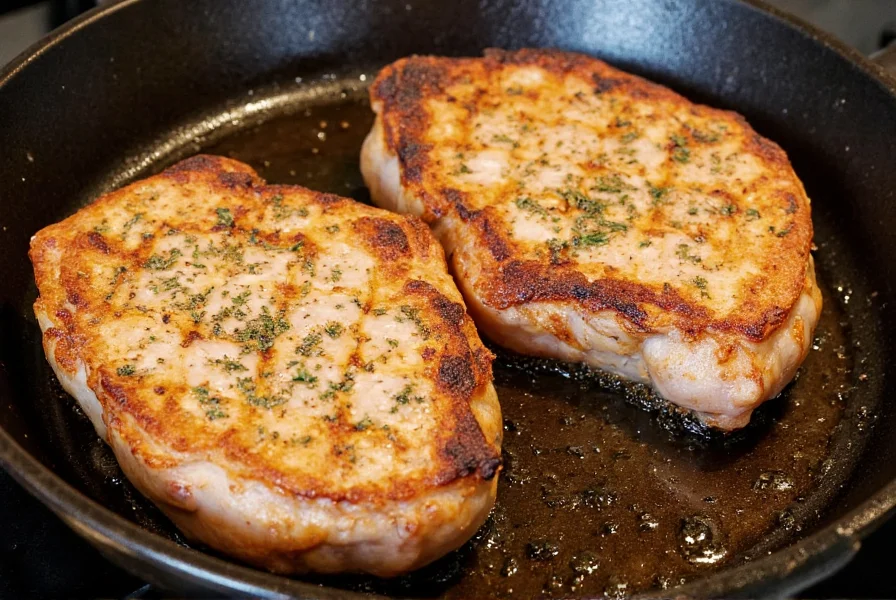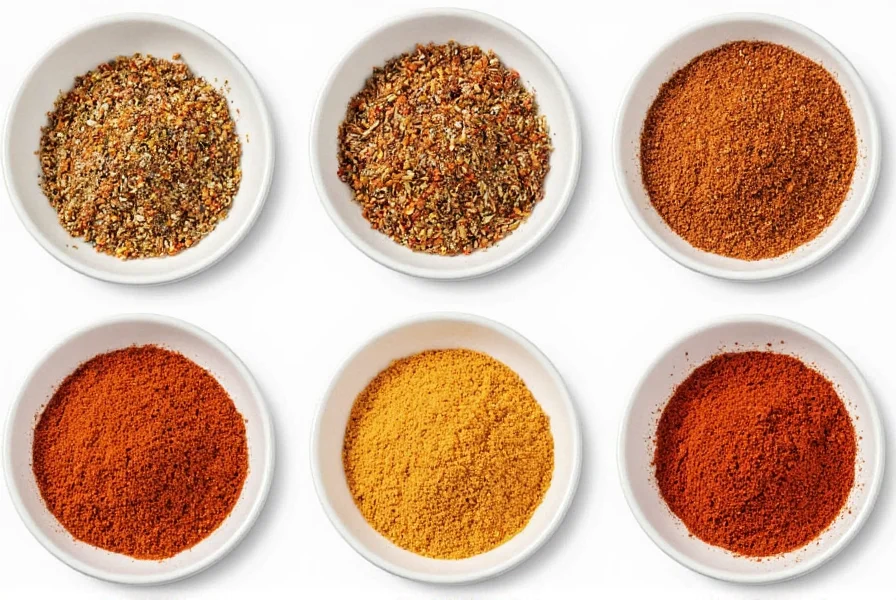Perfectly seasoned pork chops transform from ordinary to extraordinary with the right flavor balance. While many home cooks reach for pre-made mixes, understanding the science behind effective pork chop seasoning unlocks consistent restaurant-quality results. This guide reveals professional techniques that enhance natural pork flavors while creating delicious crusts and juicy interiors.
The Science Behind Effective Pork Chop Seasoning
Unlike chicken or beef, pork has a delicate flavor profile that requires thoughtful seasoning. The ideal pork chop seasoning strategy balances three critical elements: salt penetration, flavor layering, and timing. Salt isn't just for taste—it actually changes the protein structure, improving moisture retention during cooking. When applied properly, salt draws out surface moisture initially, then gets reabsorbed along with the juices, creating a more flavorful and tender chop.
Professional chefs emphasize that seasoning isn't just about what you use, but when you apply it. The window between seasoning and cooking dramatically affects texture and flavor development. For best results, apply salt-based seasonings at least 45 minutes before cooking to allow proper absorption. This technique, known as dry brining, produces superior results compared to last-minute seasoning.
Essential Components of Pork Chop Seasoning Blends
Creating balanced pork chop seasoning requires understanding core flavor components. Every effective blend contains these fundamental elements:
| Component | Function | Common Examples |
|---|---|---|
| Salt | Flavor enhancer and texture modifier | Kosher salt, sea salt, smoked salt |
| Pepper | Complexity and subtle heat | Freshly ground black pepper, white pepper |
| Aromatics | Flavor foundation | Garlic powder, onion powder, shallot powder |
| Herbs | Freshness and earthiness | Dried rosemary, thyme, sage |
| Spices | Depth and complexity | Paprika, cumin, coriander, mustard powder |
Four Proven Pork Chop Seasoning Profiles
Understanding flavor profiles helps match seasonings to cooking methods and personal preferences. These four approaches cover most culinary scenarios:
1. Classic Salt-and-Pepper Foundation
The simplest pork chop seasoning often yields the most impressive results. Combine 1 teaspoon kosher salt and ½ teaspoon freshly ground black pepper per 1-inch thick chop. Add ¼ teaspoon garlic powder for depth without overpowering the meat's natural flavor. This basic blend works exceptionally well for pan-seared or grilled chops where you want the pork flavor to shine.
2. Herb-Forward European Style
For those who appreciate traditional European preparations, combine 1 teaspoon kosher salt, ½ teaspoon black pepper, 1 teaspoon dried thyme, 1 teaspoon dried rosemary (crushed), and ½ teaspoon dried sage. This pork chop seasoning with rosemary creates a fragrant crust that complements the meat's richness. Ideal for thicker chops cooked in cast iron or on the grill.

3. Bold Southwest Rub
When preparing pork chops on the grill, try this robust blend: 1 teaspoon kosher salt, 1 teaspoon smoked paprika, ½ teaspoon garlic powder, ½ teaspoon onion powder, ¼ teaspoon cumin, and ¼ teaspoon chili powder. The smoky elements enhance the char from grilling while the spices create complex flavor layers. This southwest pork chop seasoning works particularly well with bone-in chops.
4. Sweet-Savory Brown Sugar Blend
For oven-baked or reverse-seared chops, combine 1 teaspoon kosher salt, 1 teaspoon brown sugar, ½ teaspoon garlic powder, ½ teaspoon onion powder, and ¼ teaspoon cayenne. The sugar caramelizes during cooking, creating a beautiful crust without burning. This sweet pork chop seasoning blend balances richness with subtle heat—perfect for those who enjoy contrasting flavors.
Timing and Application Techniques That Make a Difference
How you apply pork chop seasoning matters as much as the ingredients themselves. Follow these professional techniques:
- Dry brining method: Apply salt-based seasonings 1-24 hours before cooking, then refrigerate uncovered. This allows salt to penetrate deeply while drying the surface for better searing.
- Oil application: Lightly coat chops with neutral oil after seasoning to help spices adhere without washing away flavors.
- Two-stage seasoning: Apply salt early, then add delicate herbs and spices just before cooking to preserve their volatile compounds.
- Post-cooking boost: Finish with flaky sea salt and a squeeze of fresh lemon or apple cider vinegar to brighten flavors.
Common Pork Chop Seasoning Mistakes to Avoid
Even experienced cooks make these seasoning errors that compromise results:
- Seasoning too late: Applying salt immediately before cooking doesn't allow time for flavor development and moisture regulation.
- Overcomplicating blends: Using too many spices overwhelms pork's delicate flavor. Stick to 3-5 complementary ingredients.
- Ignoring thickness: Thicker chops need more seasoning by volume than thinner cuts—adjust proportions accordingly.
- Burning spices: Sugar and certain spices burn easily. Apply sweet elements later in cooking or use indirect heat.
Special Considerations for Different Cooking Methods
The best pork chop seasoning varies based on your cooking technique:
- Grilling: Use robust seasonings with smoked elements that complement char. Avoid sugar-heavy blends that burn on direct flame.
- Pan-searing: Opt for simpler blends that create flavorful fond in the pan for deglazing. Salt content becomes especially important for crust formation.
- Oven-roasting: Incorporate more delicate herbs that have time to infuse during slower cooking. Consider adding fresh herbs halfway through.
- Sous vide: Season aggressively since some flavors leach into the bag. Finish with a light crust seasoning after cooking.

Creating Your Own Signature Pork Chop Seasoning
Developing personalized pork chop seasoning involves understanding flavor relationships. Start with the salt-pepper foundation, then add one complementary element at a time. Taste small amounts of your blend (without raw meat contact) to assess balance. Remember that cooking intensifies certain flavors—what seems mild raw will become more pronounced when cooked.
Document your experiments with different ratios and cooking methods. Note how thickness, cooking temperature, and resting time affect the final flavor. Within a few attempts, you'll develop reliable pork chop seasoning recipes tailored to your preferences and equipment.
Frequently Asked Questions
How far in advance should I season pork chops?
For best results, season pork chops with salt-based blends at least 45 minutes before cooking, or up to 24 hours for thicker cuts. This dry brining process allows salt to penetrate the meat, improving both flavor and moisture retention during cooking. Apply delicate herbs and spices just before cooking to preserve their volatile compounds.
Can I use fresh herbs instead of dried in pork chop seasoning?
Yes, but with important timing considerations. Use three times the amount of fresh herbs compared to dried (since dried herbs are more concentrated). Add delicate fresh herbs like parsley or chives just before serving, while hardy herbs like rosemary or thyme can be added during the last 5-10 minutes of cooking. Fresh herbs contain more moisture, so pat chops dry before searing if using them in advance.
Why does my pork chop seasoning burn during cooking?
Seasoning burns primarily due to sugar content or excessive heat. Avoid sugar-heavy blends when using direct high heat methods like grilling. If using brown sugar or other sweet elements, apply them during the last few minutes of cooking. Ensure your pan or grill is properly preheated but not smoking hot—medium-high heat typically works best for seasoned pork chops.
Should I rinse off seasoning before cooking pork chops?
No, never rinse off seasoning before cooking. Rinsing washes away the carefully applied flavors and creates a wet surface that prevents proper searing. If you've dry-brined with salt for an extended period, you might notice some moisture on the surface—simply pat the chops dry with paper towels before cooking to ensure optimal crust formation.
What's the difference between pork chop rub and marinade?
A dry rub consists of solid seasoning ingredients applied to the surface, creating a flavorful crust while preserving the meat's natural texture. Marinades are liquid-based and typically contain acid (like vinegar or citrus) which can break down proteins. For pork chops, dry rubs generally work better as they enhance rather than alter the meat's texture, while marinades can make the surface mushy if overused.










 浙公网安备
33010002000092号
浙公网安备
33010002000092号 浙B2-20120091-4
浙B2-20120091-4